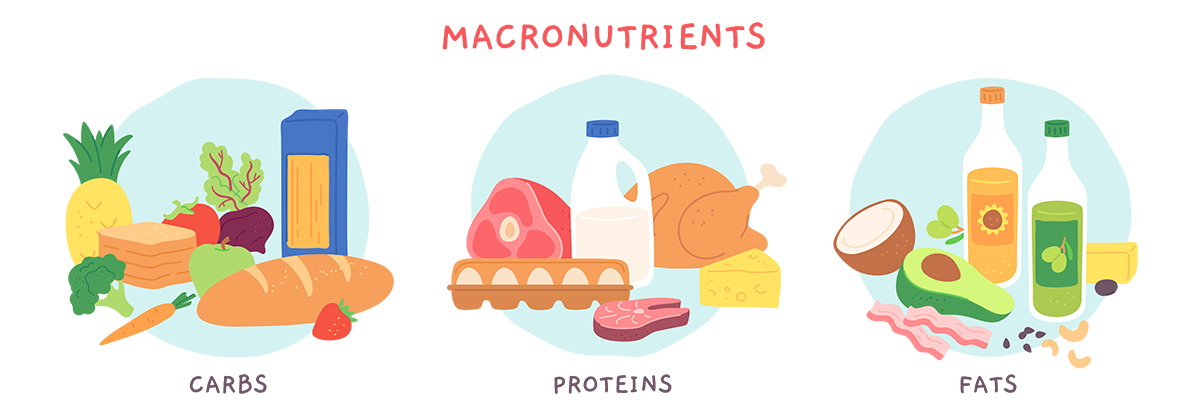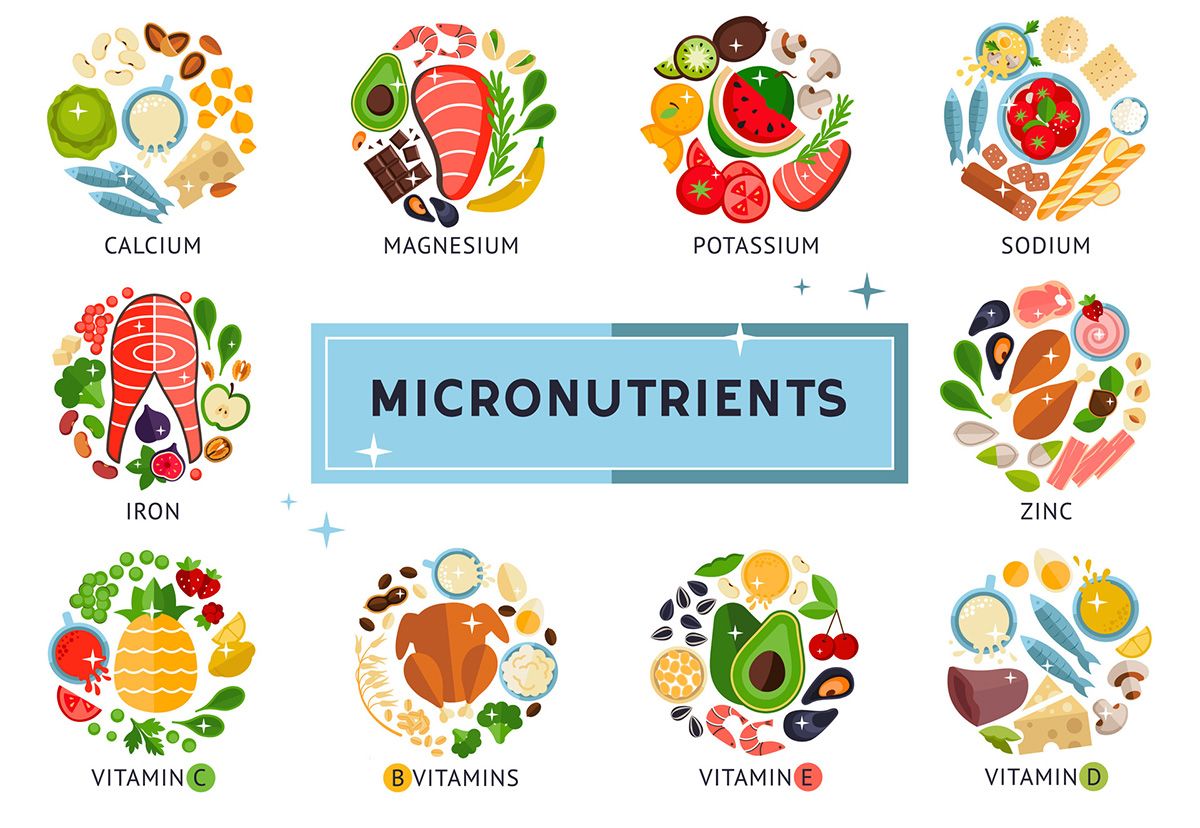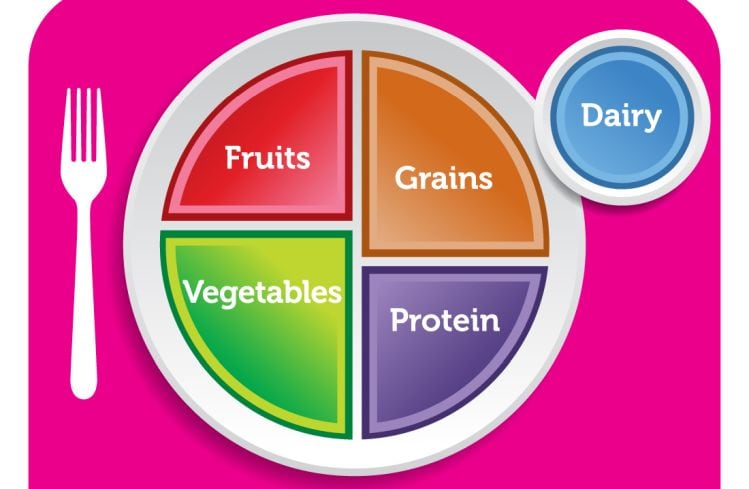Introduction to Essential Nutrients

Source: healthinfo.healthengine.com
Your body is an incredible machine that requires specific fuel to function properly. Just as a car needs gasoline, oil, and other fluids to run smoothly, your body demands certain substances to maintain health and vitality. These substances are known as essential nutrients.
Understanding Nutrients and Their Importance
Essential nutrients are compounds that the body cannot make or cannot make in sufficient quantity and must come from food. [#1] Without these crucial components, our bodies would fail to perform basic functions like growth, repair, and regulation of bodily processes.
Think of nutrients as the building blocks that construct every cell in your body. They provide energy, support immune function, aid in digestion, and help maintain everything from your heartbeat to your ability to think clearly. A lack of any essential nutrient can lead to health problems ranging from minor issues like fatigue to serious conditions such as malnutrition or disease.
Overview of the Six Essential Nutrients
The six essential nutrients are vitamins, minerals, protein, fats, water, and carbohydrates. [#2] Each plays a distinct role in maintaining your health:
- Carbohydrates: Your body’s primary energy source, fueling brain function and physical activity
- Proteins: Critical for building and repairing tissues, making enzymes, and supporting immune function
- Fats: Necessary for energy storage, insulation, and absorption of fat-soluble vitamins
- Vitamins: Organic compounds needed in small amounts for various metabolic processes
- Minerals: Inorganic elements that help with everything from bone formation to fluid balance
- Water: The medium in which all cellular processes occur and the substance that makes up about 60% of your body
These six categories work together in a complex symphony that keeps your body functioning optimally. No single nutrient works in isolation—they’re all interconnected in supporting your overall health.
Why Essential Nutrients Must Come from Food
Unlike non-essential nutrients, which your body can produce on its own, essential nutrients must be obtained through your diet. This biological reality underscores the importance of consuming a varied and balanced diet.
The food on your plate isn’t just about satisfying hunger or pleasing your taste buds—it’s a package of life-sustaining compounds. When you bite into an apple, you’re not just enjoying its sweetness; you’re providing your body with carbohydrates for energy, fiber for digestion, and various vitamins and minerals that support countless bodily functions.
Modern food processing and lifestyle changes have complicated our relationship with nutrients. Many people now consume diets high in calories but low in essential nutrients—a phenomenon sometimes called “overfed but undernourished.” This highlights why understanding nutrition basics is more important than ever for maintaining good health.
Adopting a balanced approach to eating helps guarantee that your body receives all the nutrients it needs. This doesn’t necessarily mean following strict diets or counting every calorie—rather, it’s about making informed choices that prioritize nutrient-dense foods while still enjoying meals.
Macronutrients

Source: thebekindpeopleproject.org
When we talk about the nutrients your body needs in substantial quantities, we’re referring to macronutrients. These powerhouse compounds form the foundation of your diet and provide the bulk of your energy needs. Macronutrients, needed in large amounts, include protein, carbohydrates, and fat. [#3]
Let’s explore each of these vital macronutrients and understand why they deserve a prominent place on your plate.
Carbohydrates
Often maligned in popular diet culture, carbohydrates are actually your body’s preferred energy source. These molecules break down into glucose, which fuels everything from your brain function to your physical activities.
Carbohydrates provide a ready source of energy for the body and structural constituents for cell formation. [#4] Without adequate carbohydrate intake, your body might struggle with basic functions and could resort to breaking down proteins for energy—a less efficient process that can impact muscle maintenance.
Not all carbs are created equal, however. Complex carbohydrates found in whole grains, legumes, and vegetables offer sustained energy and come packaged with fiber, vitamins, and minerals. Simple carbohydrates, like those in refined sugars and processed foods, provide quick energy but lack nutritional density. A well-rounded approach to carbohydrate consumption focuses on:
- Whole grains such as brown rice, quinoa, and oats
- Starchy vegetables like sweet potatoes and butternut squash
- Legumes including beans, lentils, and chickpeas
- Fruits that combine natural sugars with fiber and nutrients
Proteins
If carbohydrates are your body’s fuel, proteins are its building materials. These complex molecules, made up of amino acids, serve as the foundation for virtually every structure in your body.
Protein is necessary for building and repairing tissues. [#5] From your hair and nails to your muscles and organs, protein plays a crucial role in growth and maintenance. Beyond structural support, proteins also:
- Form enzymes that facilitate chemical reactions
- Create hormones that regulate bodily functions
- Support immune function through antibody production
- Transport various substances throughout your bloodstream
- Maintain proper fluid balance
Quality protein sources span both animal and plant kingdoms. Animal-based options like meat, fish, eggs, and dairy provide complete proteins containing all essential amino acids. Plant-based sources such as beans, nuts, seeds, and certain grains can be combined strategically to create complete protein profiles, making them valuable options for those following vegetarian or vegan diets.
Fats
Perhaps the most misunderstood macronutrient, dietary fat has undergone a significant image rehabilitation in recent years. Far from being simply a waistline expander, fat serves numerous vital functions in your body.
Fats help the body absorb vitamins and minerals and should make up 20% to 35% of daily calories. Without adequate fat intake, your body would struggle to absorb fat-soluble vitamins (A, D, E, and K), potentially leading to deficiencies despite consuming these nutrients.
The world of dietary fats is diverse, with some types offering more health benefits than others:
- Unsaturated fats: Found in olive oil, avocados, nuts, and fatty fish, these fats support heart health and reduce inflammation
- Saturated fats: Present in animal products and some plant oils (like coconut), these should be consumed in moderation
- Trans fats: Primarily artificial fats found in processed foods, these are best avoided as they increase disease risk
- Omega-3 fatty acids: A special type of unsaturated fat found in fish, flaxseeds, and walnuts that supports brain health and reduces inflammation
Fat also provides the most concentrated form of energy (9 calories per gram compared to 4 calories per gram for both carbohydrates and protein), helps maintain cell membrane integrity, insulates the body, and protects vital organs.
Finding the right balance of macronutrients is key to supporting your body’s functions while maintaining a healthy weight. Rather than eliminating any macronutrient group, focus on selecting high-quality sources of each and adjusting proportions based on your individual health needs, activity level, and goals. A nutritionist or healthcare provider can help you determine the optimal macronutrient ratio for your specific situation.
Micronutrients


Source: steadfastnutrition.in
While macronutrients provide the bulk of your energy needs, micronutrients work behind the scenes as the unsung heroes of your body’s biochemistry. These essential substances are required in much smaller amounts—hence the prefix ‘micro’—but their impact on health is anything but small. Micronutrients consist of vitamins and minerals that support countless bodily functions.
Let’s dive into these tiny yet mighty nutrients that keep your body running smoothly.
Vitamins
Vitamins are organic compounds that your body needs in small amounts to function properly. What makes vitamins special is that most must come from food because your body either cannot produce them or produces them in insufficient quantities.
These powerful compounds serve as catalysts for numerous biochemical reactions in your body. Vitamins and minerals are essential nutrients that the body needs in small amounts to function properly. [#6] Without adequate vitamin intake, even the simplest bodily processes can falter, leading to specific deficiency diseases.
Vitamins fall into two main categories:
- Fat-soluble vitamins (A, D, E, K): These vitamins dissolve in fat and can be stored in your body tissues for extended periods. This storage capability means you don’t need to consume them daily, but it also presents a risk of accumulation to potentially harmful levels if taken in excess.
- Water-soluble vitamins (B complex, C): These vitamins dissolve in water and generally cannot be stored by your body. Any excess is typically excreted through urine, making daily consumption necessary for optimal health.
Each vitamin plays distinct roles in maintaining health:
- Vitamin A: Supports vision, immune function, and cell growth
- B Vitamins: Aid energy production, red blood cell formation, and nervous system function
- Vitamin C: Boosts immune function, promotes wound healing, and acts as an antioxidant
- Vitamin D: Facilitates calcium absorption and bone health
- Vitamin E: Functions as an antioxidant, protecting cells from damage
- Vitamin K: Essential for blood clotting and bone metabolism
Good sources of vitamins span across food groups. Colorful fruits and vegetables provide vitamins A and C, while whole grains offer B vitamins. Fatty fish delivers vitamin D, and nuts and seeds contain vitamin E. A varied diet typically supplies adequate vitamins for most people, though certain life stages or health conditions may warrant supplementation under medical guidance.
Minerals
Unlike vitamins, minerals are inorganic elements that come from soil and water, eventually making their way into the plants and animals we consume. These elements remain in their elemental form throughout digestion and absorption.
Minerals serve three primary functions in your body: they regulate body processes, are necessary for proper cellular function, and comprise body tissue. From the calcium in your bones to the iron in your blood, minerals form structural components while also enabling countless biochemical reactions.
Minerals are typically categorized based on how much your body needs:
- Major minerals (macrominerals): Needed in larger amounts (>100mg/day), these include calcium, phosphorus, magnesium, sodium, potassium, chloride, and sulfur
- Trace minerals (microminerals): Required in smaller amounts (<100mg/day), these include iron, zinc, copper, manganese, iodine, selenium, and fluoride
Each mineral contributes uniquely to your health:
- Calcium: Builds and maintains bones and teeth, supports muscle function and nerve transmission
- Iron: Carries oxygen throughout the body as a component of hemoglobin
- Zinc: Supports immune function, wound healing, and DNA synthesis
- Potassium: Regulates fluid balance, muscle contractions, and nerve signals
- Magnesium: Involved in over 300 biochemical reactions, including energy production and protein synthesis
Mineral sources vary widely across food groups. Dairy products provide calcium, while red meat offers iron and zinc. Leafy greens contain magnesium, and bananas are rich in potassium. Seafood delivers iodine and selenium. As with vitamins, a diverse diet typically provides adequate minerals for most individuals.
Understanding the balance between different minerals is crucial, as they can compete for absorption or work synergistically. For example, calcium and iron compete for absorption, while vitamin D enhances calcium absorption. This complex interplay highlights why obtaining nutrients from whole foods rather than isolated supplements often yields better results.
While micronutrients don’t provide energy directly like macronutrients do, they’re absolutely essential for extracting energy from food and supporting countless bodily functions. Their importance becomes starkly apparent when deficiencies develop, potentially leading to conditions ranging from anemia (iron deficiency) to scurvy (vitamin C deficiency) or rickets (vitamin D deficiency).
The best approach to meeting your micronutrient needs involves consuming a rainbow of fruits and vegetables, along with whole grains, lean proteins, and healthy fats. This strategy provides not only essential vitamins and minerals but also beneficial phytonutrients and fiber that work together to optimize health. Examining the nutritional value of your food choices can help you make informed decisions about your diet.
Water
After exploring the world of macro and micronutrients, we arrive at perhaps the most fundamental nutrient of all: water. Often overlooked in nutritional discussions, water deserves special attention as it’s not just another nutrient—it’s the medium in which all bodily processes occur. About 60% of the human body is water, making it the most abundant substance in your body.
Let’s dive into why this simple molecule is absolutely critical for your survival and optimal health.
Importance of Water for the Body
Water isn’t just a passive component of your body—it actively participates in countless physiological processes. Every cell, tissue, and organ depends on water to function properly. Without adequate hydration, even the most basic bodily functions begin to falter.
Water serves multiple crucial roles in your body:
- Transportation system: Water carries nutrients to cells and removes waste products through urine and sweat
- Biochemical medium: Most chemical reactions in your body occur in water-based solutions
- Lubricant and cushion: Water lubricates joints and cushions sensitive tissues like the brain and spinal cord
- Digestive aid: Water helps break down food so your body can absorb nutrients
- Detoxification agent: Water is essential for flushing toxins from your body through urination, perspiration, and bowel movements
The consequences of dehydration can range from mild to severe. Even slight dehydration—losing just 1-2% of your body’s water content—can impair cognitive function, reduce physical performance, and trigger headaches. More severe dehydration can lead to serious health complications, including heat stroke, kidney problems, and in extreme cases, death.
How Much Water Do You Need?
The classic recommendation of eight 8-ounce glasses of water daily (about 2 liters) serves as a simple guideline, but individual water needs vary considerably. Factors affecting your hydration requirements include:
- Body size and composition: Larger individuals generally need more water
- Activity level: Exercise increases water loss through sweat, requiring additional intake
- Environment: Hot or humid conditions accelerate water loss through perspiration
- Health status: Certain illnesses, especially those involving fever, vomiting, or diarrhea, increase water loss
- Pregnancy and breastfeeding: These conditions increase fluid needs significantly
Rather than fixating on a specific quantity, pay attention to your body’s signals. Thirst is an obvious indicator, but by the time you feel thirsty, you’re already slightly dehydrated. The color of your urine offers another practical gauge—pale yellow typically indicates good hydration, while darker yellow suggests you need more fluids.
Healthy Sources of Water
While plain water is the most direct way to hydrate, it’s not the only source of fluid in your diet. Many foods and beverages contribute to your daily water intake:
- Water-rich foods: Many fruits and vegetables contain 80-95% water by weight. Watermelon, cucumber, strawberries, lettuce, and zucchini are particularly hydrating choices
- Beverages: Milk, juice, tea, and coffee count toward fluid intake, though some (like coffee) may have mild diuretic effects
- Soups and broths: These liquid-based foods provide both hydration and nutrients
When choosing water sources, quality matters as much as quantity. Tap water quality varies by location, and while bottled water offers convenience, it comes with environmental considerations. Home filtration systems can provide a middle ground, removing potential contaminants while reducing plastic waste.
Water’s Role in Body Temperature Regulation
One of water’s most remarkable functions is its ability to regulate your body temperature. This process, known as thermoregulation, keeps your internal environment stable despite external temperature fluctuations.
When your body heats up—whether from exercise, hot weather, or fever—water plays a starring role in cooling you down. Your body releases heat through sweat, which is primarily water. As sweat evaporates from your skin, it creates a cooling effect that helps maintain your core temperature within a safe range.
This cooling mechanism is remarkably efficient but depends entirely on adequate hydration. Without sufficient water reserves, your body struggles to produce sweat, compromising its ability to cool itself. This explains why proper hydration becomes even more critical during exercise or hot weather.
Beyond temperature control, water’s high specific heat capacity (its ability to absorb heat without significant temperature change) helps buffer your internal organs against rapid temperature fluctuations. This property makes water an ideal medium for maintaining the stable internal environment that complex biochemical processes require.
While other nutrients provide the building blocks and energy for bodily functions, water creates the environment where life’s chemistry can occur. Its simple molecular structure belies its profound importance—without water, the complex dance of metabolism, cell signaling, and nutrient transport would grind to a halt.
As you consider your nutritional needs, remember that water deserves as much attention as any vitamin, mineral, or macronutrient. Developing good hydration habits—drinking water throughout the day, increasing intake during exercise or illness, and consuming water-rich foods—forms a cornerstone of good nutrition and overall health.
Dietary Guidelines and Recommendations

Source: foodnavigator-usa.com
Now that we’ve explored the essential nutrients your body needs—from macronutrients and micronutrients to the vital role of water—let’s examine how to put this knowledge into practice. Understanding dietary guidelines can help you make informed choices about your daily nutrition intake.
Daily Intake Recommendations
Nutritional science continues to evolve, and so do the official recommendations that guide our eating habits. The Dietary Guidelines for Americans are updated every 5 years by the U.S. Department of Health and Human Services and the U.S. Department of Agriculture.
These guidelines provide science-based advice on what to eat and drink to meet nutrient needs, promote health, and prevent disease. They serve as the cornerstone for federal nutrition programs and policies, influencing everything from school lunch programs to food assistance initiatives.
Current recommendations focus on eating patterns rather than individual nutrients. This holistic approach recognizes that foods are consumed in combination and that these combinations affect how nutrients are absorbed and used by the body.
For macronutrients, the guidelines suggest specific proportions of your daily caloric intake:
- Carbohydrates: 45-65% of total daily calories
- Proteins: 10-35% of total daily calories
- Fats: 20-35% of total daily calories, with emphasis on healthy fats
For micronutrients, recommendations are typically expressed as specific amounts (in milligrams or micrograms) and vary based on age, sex, and life stage. These values, known as Dietary Reference Intakes (DRIs), include several different measurements:
- Recommended Dietary Allowance (RDA): The average daily intake level sufficient to meet the nutrient requirements of nearly all healthy individuals
- Adequate Intake (AI): Used when an RDA cannot be determined
- Tolerable Upper Intake Level (UL): The maximum daily intake unlikely to cause adverse health effects
Balancing Nutrient Intake
While knowing the recommended amounts is helpful, achieving balanced nutrition goes beyond numbers. The quality of your food choices matters tremendously.
A practical approach to balanced eating includes:
- Emphasizing whole foods: Fruits, vegetables, whole grains, lean proteins, and healthy fats should form the foundation of your diet
- Limiting processed foods: These often contain added sugars, unhealthy fats, and excessive sodium while providing fewer nutrients
- Practicing portion awareness: Even nutritious foods can contribute to weight gain when consumed in excessive amounts
- Diversifying your plate: Different colored fruits and vegetables provide various phytonutrients and antioxidants
- Planning meals: Thoughtful meal planning helps maintain nutritional balance throughout the week
Remember that individual nutritional needs vary based on factors like age, sex, activity level, and health status. What works perfectly for one person might not be optimal for another. This is where personalized nutrition advice from healthcare professionals becomes valuable.
Reading Food Labels
Food labels serve as valuable tools for making informed nutritional choices. Learning to decode them can transform your grocery shopping experience and dietary habits.
Key elements to focus on when reading food labels include:
- Serving size: All nutritional information is based on this amount, which may differ from what you actually consume
- Calories: Consider these in the context of your daily energy needs
- Nutrients: Check for both nutrients to limit (saturated fats, sodium, added sugars) and those to get enough of (fiber, vitamins, minerals)
- Percent Daily Value (%DV): Shows how much a serving contributes to your recommended daily intake
- Ingredient list: Ingredients appear in descending order by weight; this can reveal hidden sugars, unhealthy fats, or artificial additives
A quick rule of thumb: 5% DV or less is considered low for any nutrient, while 20% DV or more is high. This applies whether you’re trying to limit a nutrient (like sodium) or increase one (like fiber).
Beyond the standard nutrition facts panel, be wary of marketing claims on packaging. Terms like “e;natural,”e; “e;made with real fruit,”e; or “e;multigrain”e; can be misleading. The ingredient list and nutrition facts provide more reliable information about a product’s actual nutritional value.
Addressing Common Nutrient Deficiencies
Despite living in an era of food abundance, nutrient deficiencies remain surprisingly common. Several factors contribute to this paradox, including poor dietary choices, food processing that strips nutrients, soil depletion affecting crop nutrient content, and individual variations in nutrient absorption.
Some of the most prevalent nutrient gaps include:
- Vitamin D: Limited sun exposure and few natural food sources make this a common deficiency
- Iron: Particularly common in women of childbearing age, vegetarians, and vegans
- Vitamin B12: Primarily found in animal products, making deficiency a concern for those following plant-based diets
- Calcium: Essential for bone health but often consumed in insufficient amounts
- Magnesium: Depleted in many soils and removed during food processing
- Omega-3 fatty acids: Limited in typical Western diets that lack fatty fish and certain plant foods
Addressing these gaps requires a two-pronged approach: first, emphasizing nutrient-dense whole foods, and second, considering targeted supplementation when necessary. However, supplements should complement, not replace, a nutritious diet.
If you suspect a nutrient deficiency, consider consulting with a healthcare provider who can order appropriate tests and provide personalized recommendations. Symptoms like unusual fatigue, brittle nails, hair loss, or slow wound healing might indicate nutritional gaps that deserve attention.
By understanding dietary guidelines, balancing your nutrient intake, reading food labels effectively, and addressing potential deficiencies, you can transform nutritional knowledge into practical eating habits that support long-term health and wellbeing. Remember that small, consistent improvements often yield better results than dramatic but unsustainable changes to your eating patterns.
Conclusion
Summary of Essential Nutrients
Throughout this article, we’ve explored the critical building blocks that fuel our bodies and maintain our health. Essential nutrients—those compounds our bodies cannot produce in sufficient quantities—form the foundation of human nutrition and wellbeing.
Let’s recap what we’ve learned about these vital substances:
- Macronutrients provide energy and structural components:
- Carbohydrates serve as our primary energy source
- Proteins build and repair tissues while supporting immune function
- Fats insulate organs, store energy, and facilitate vitamin absorption
- Micronutrients enable countless biochemical reactions:
- Vitamins act as catalysts for metabolic processes
- Minerals contribute to structural integrity and fluid balance
- Water, often overlooked yet absolutely fundamental, regulates body temperature, transports nutrients, and facilitates waste removal
These nutrients work in concert, not isolation. Their interactions create a complex symphony that powers every aspect of our physical existence—from the beating of our hearts to the thoughts forming in our minds.
Final Thoughts on Maintaining a Balanced Diet
Nutrition science continues to advance, but certain principles remain constant. A balanced diet rich in whole foods provides the best foundation for meeting your nutritional needs. While specific requirements vary based on individual factors like age, activity level, and health status, the basic framework applies to everyone.
Consider these practical strategies for nutritional success:
- Focus on food quality rather than just calorie counting. Nutrient density—the amount of beneficial nutrients relative to calories—matters tremendously.
- Embrace variety in your food choices. Different foods contain different nutrient profiles, and diversity helps cover all your bases.
- Listen to your body’s signals. Hunger, fullness, energy levels, and even cravings can provide valuable feedback about your nutritional status.
- Make sustainable changes rather than following extreme diets. Small, consistent improvements typically yield better long-term results than dramatic but temporary overhauls.
- Learn to read and understand what’s actually in your food by examining nutrition facts panels and ingredient lists.
Remember that perfect nutrition doesn’t exist. The occasional indulgence won’t derail your health, just as one nutritious meal won’t instantly transform it. What matters most is your overall pattern of eating over time.
Nutrition shouldn’t be a source of stress or anxiety. Food nourishes not only our bodies but also our social connections and cultural identities. Finding balance means honoring both the biological importance of nutrients and the joy that comes from sharing meals with others.
As you continue your nutritional journey, stay curious and open to learning. New research emerges regularly, sometimes challenging conventional wisdom. Approach nutrition information with healthy skepticism, particularly when claims seem too good to be true or contradict established scientific consensus.
Above all, remember that nutrition is personal. While the essential nutrients remain the same for everyone, how you obtain them and in what proportions can vary based on your unique circumstances. The best diet for you is one that meets your nutritional needs, aligns with your preferences and values, and proves sustainable for your lifestyle.
By understanding the essential nutrients your body needs and making informed choices about how to obtain them, you’re taking a powerful step toward optimizing your health and wellbeing. Your body is remarkably resilient and responsive—give it the right tools, and it will reward you with energy, vitality, and the capacity to live life to its fullest.
References
- 1. Essential Nutrients 101: Your Guide to Nutrition
https://maxliving.com/healthy-articles/essential-nutrients-101-your-guide-nutrition-what-you-need-and-the-science-of-why/ - 2. 6 essential nutrients: Sources and why you need them
https://www.medicalnewstoday.com/articles/326132 - 3. 6 Essential Nutrients and Why Your Body Needs Them
https://www.healthline.com/health/food-nutrition/six-essential-nutrients - 4. Essential Nutrients – Nutrition Essentials
https://open.maricopa.edu/nutritionessentials/chapter/essential-nutrients/ - 5. 8 nutrients you need every day | News & articles
https://www.uhc.com/news-articles/medicare-articles/8-nutrients-you-need-every-day - 6. Vitamins and minerals – Food and nutrition
https://www.nhsinform.scot/healthy-living/food-and-nutrition/eating-well/vitamins-and-minerals/